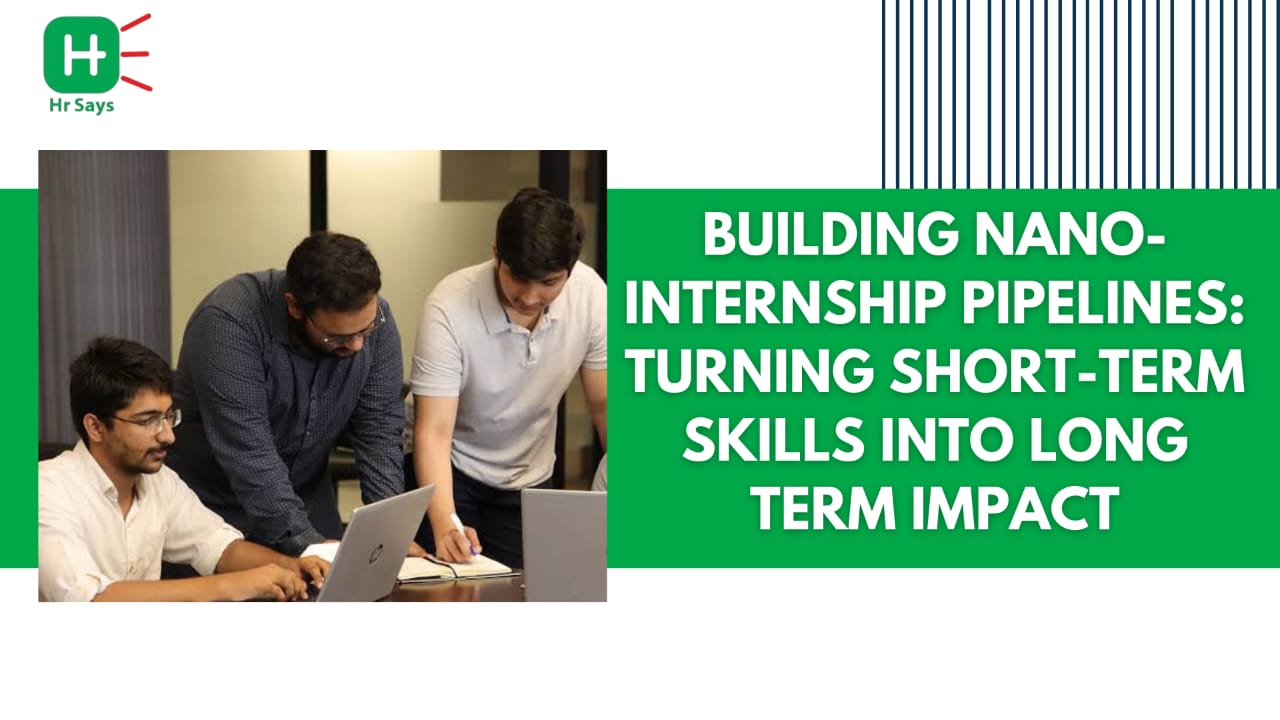Is it possible to redesign internships to the modern fast-paced world? Absolutely. The classical internships not only fail to hit target in terms of the learners but also the organizations. Nano-internships—short, focused, project-based work experiences—are quietly solving this problem. And now, the challenge is to build pipelines that actually work.
Why Nano-Internships Work
Nano-internships have picked up traction for a reason. They’re short, specific, and real.
These micro-projects allow:
● Quick exposure to real-world challenges
● Low-risk engagement for companies
● Faster feedback cycles for interns
● More inclusivity for students with time or location limits
No two weeks of getting coffee. No fluff. Just skill meets execution.
The Need for Structured Pipelines
Without structure, even a nano-internship becomes noise. The key isn’t just creating internships—but building repeatable systems.
This includes:
● Matching interns to real-time business needs
● Ensuring mentorship and check-ins
● Setting outcome-based goals from day one
Most companies try to "wing it." That’s where things break.
Components of a Strong Pipeline
Sourcing the Right Talent
Interns should feel like collaborators, not trainees. Sourcing must move beyond GPA filters and
look at:
● Micro-certifications
● Project portfolios
● Niche skill showcases
Platforms like LinkedIn, Forage, or niche talent boards help.
Curating Projects That Matter
A good project sits at the intersection of "challenging" and "doable." No one grows by copying
data into sheets.
Instead, focus on projects that are:
● 2–4 weeks long
● Built around a single deliverable
● Tied to current team goals
Let interns touch live tools and real impact.
Feedback Loops and Micro-Mentorship
What makes nano-internships educational isn’t the length—it’s the loop.
Ensure:
● A kickoff sync
● A mid-way review
● A wrap-up presentation or reflection
Bonus if the mentor isn’t a manager, but someone just 1–2 steps ahead.
Making It Scalable
One intern at a time isn’t enough. To build a real pipeline, think systems.
Here’s how:
● Automate the application process
● Use Airtable or Notion to manage project pools
● Standardize templates for onboarding
● Train mentors once, use many times
This turns chaos into cadence.
Benefits For All
It’s not just learners who gain. When done right, nano-internships deliver value back to the organization.
For companies:
● Build early-stage talent visibility
● Get low-cost experimentation
● Boost brand presence in Gen-Z circles
For learners:
● Add real projects to portfolios
● Build soft skills in compressed timelines
● Discover paths without long commitments
Final Thoughts
Nano-internships aren’t a trend. They’re a shift. The future of early-career experience is fast, focused, and flexible. What’s needed now is not just participation—but pipelines that make them scalable, intentional, and impactful.

 Nano-internships offer short-term, real-world experiences tailored for modern learners and businesses. This blog explores how to build structured, scalable pipelines that deliver meaningful impact—for both interns and companies.
Nano-internships offer short-term, real-world experiences tailored for modern learners and businesses. This blog explores how to build structured, scalable pipelines that deliver meaningful impact—for both interns and companies.












.jpeg)












.jpeg)